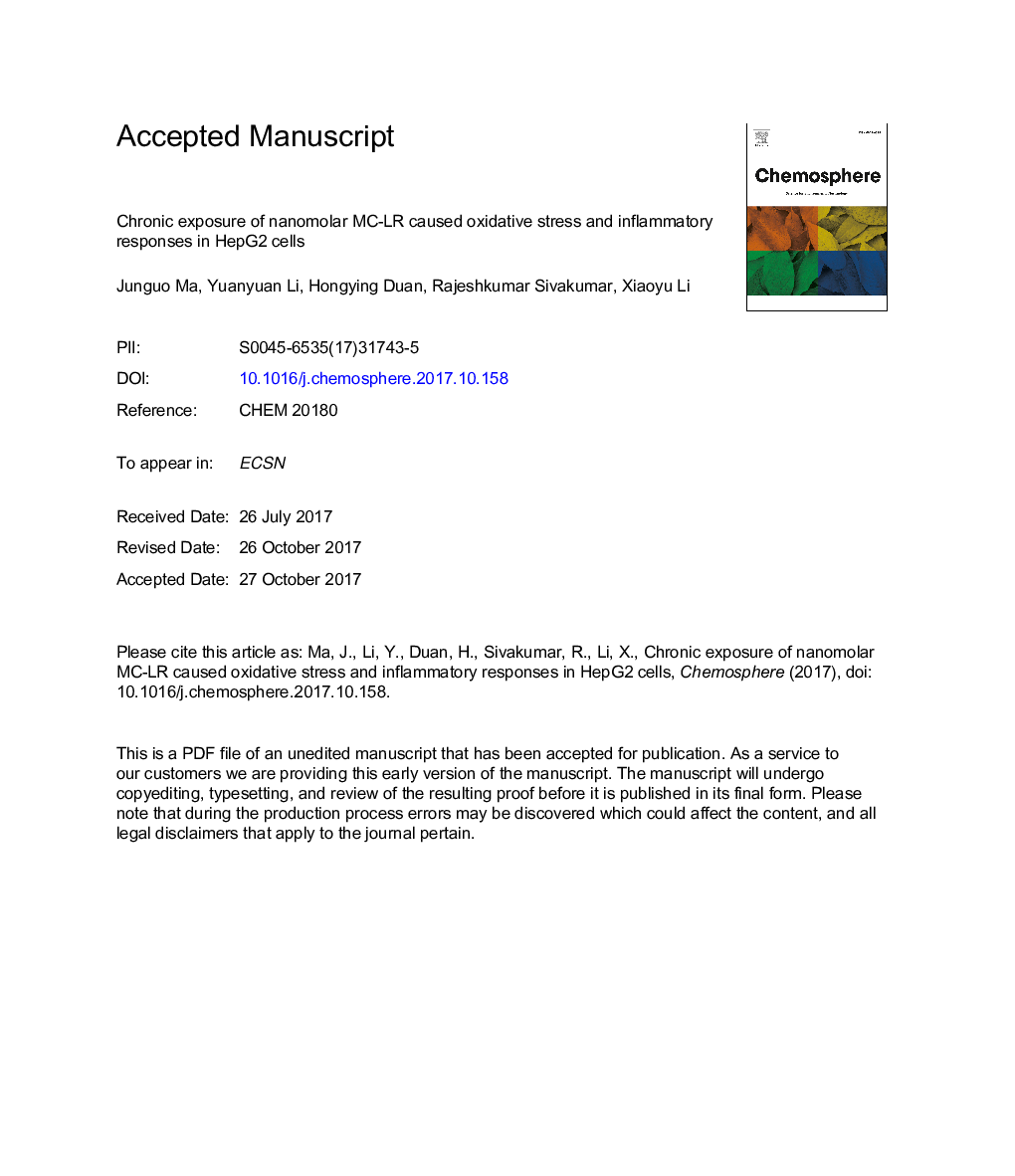| کد مقاله | کد نشریه | سال انتشار | مقاله انگلیسی | نسخه تمام متن |
|---|---|---|---|---|
| 8852781 | 1618779 | 2018 | 43 صفحه PDF | دانلود رایگان |
عنوان انگلیسی مقاله ISI
Chronic exposure of nanomolar MC-LR caused oxidative stress and inflammatory responses in HepG2 cells
دانلود مقاله + سفارش ترجمه
دانلود مقاله ISI انگلیسی
رایگان برای ایرانیان
کلمات کلیدی
موضوعات مرتبط
علوم زیستی و بیوفناوری
علوم محیط زیست
شیمی زیست محیطی
پیش نمایش صفحه اول مقاله

چکیده انگلیسی
Low dose but long-term exposure of microcystin-LR (MC-LR) could induce human hepatitis and promote liver cancer according to epidemiological investigation results, but the exact mechanism has not been completely elucidated. In the present study, a chronic toxicity test of MC-LR exposure on HepG2 cells at 0.1-30 nM for 83 d was conducted under laboratory conditions. The western blot assay result revealed that MC-LR entered HepG2 cells, even at the concentration of 0.1 nM, after 83 d of exposure, but no cytotoxicity was observed in the HepG2 cells, as determined by the CCK-8 and LDH tests. However, the results of the DCF fluorescence assay showed that the intracellular ROS level in the 30 nM MC-LR-treated cells was significantly higher than that of the control cells, and 5 and 10 nM of MC-LR exposure totally increased the activity of SOD in HepG2 cells. These results indicate that MC-LR exposure at low concentration also induced excessive ROS in HepG2 cells. Additionally, long-term exposure of MC-LR at low concentration remarkably promoted the expression of NF-κB p65, COX-2, iNOS, TNF-α, IL-1β, and IL-6 in the cells, suggesting that long-term MC-LR exposure at low concentration can induce inflammatory reaction to HepG2 cells, which might account for MC-induced human hepatitis. Thus, we hypothesized that the pathogenesis of human hepatitis and hepatocarcinoma caused by MCs might be closely associated with oxidative stress and inflammation.
ناشر
Database: Elsevier - ScienceDirect (ساینس دایرکت)
Journal: Chemosphere - Volume 192, February 2018, Pages 305-317
Journal: Chemosphere - Volume 192, February 2018, Pages 305-317
نویسندگان
Junguo Ma, Yuanyuan Li, Hongying Duan, Rajeshkumar Sivakumar, Xiaoyu Li,